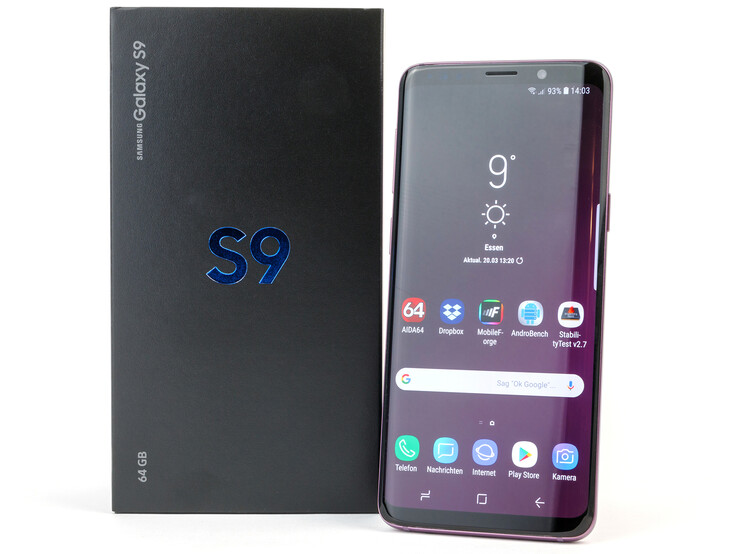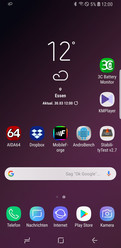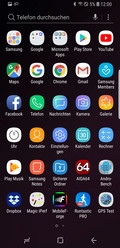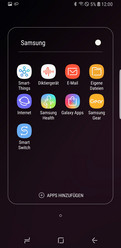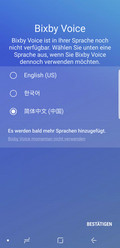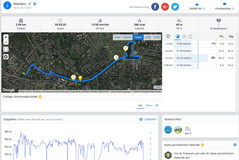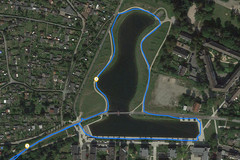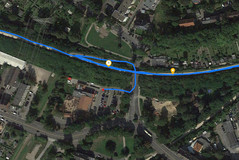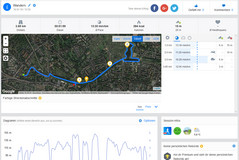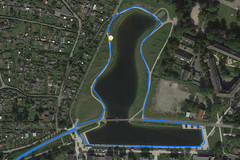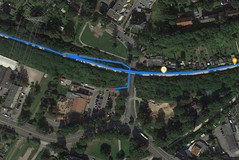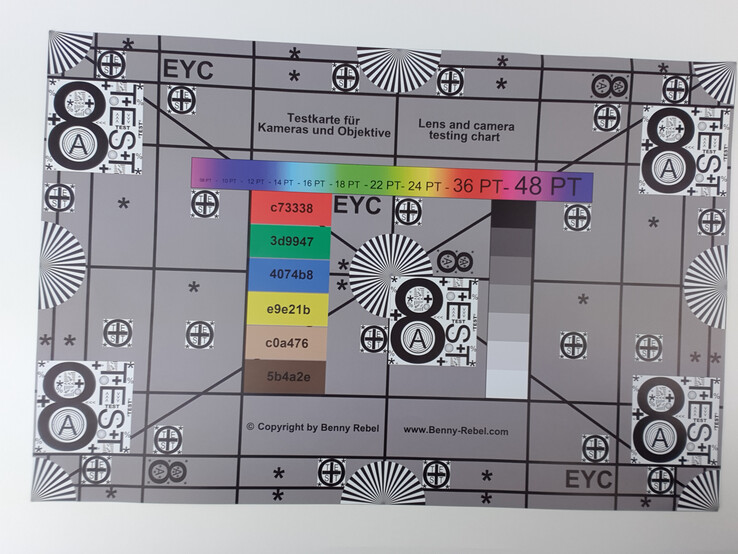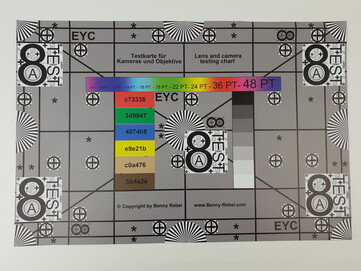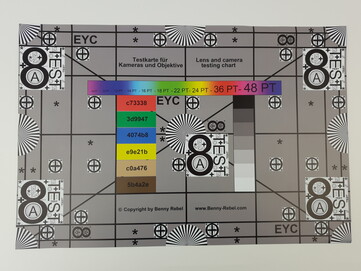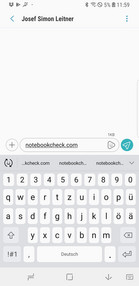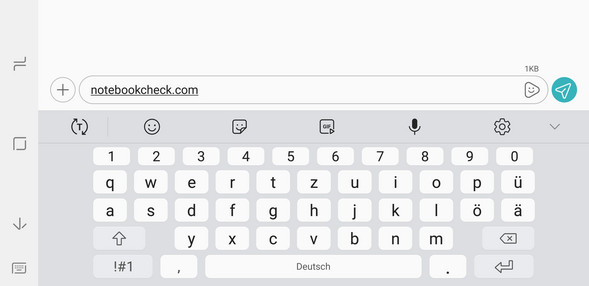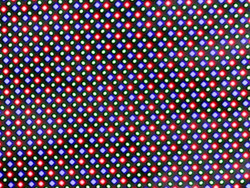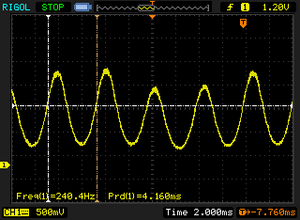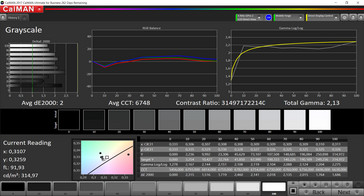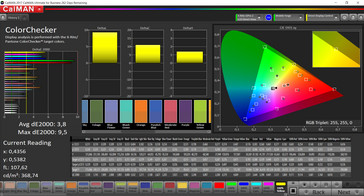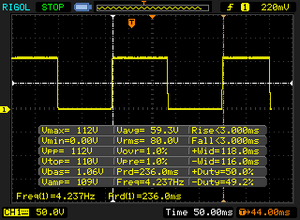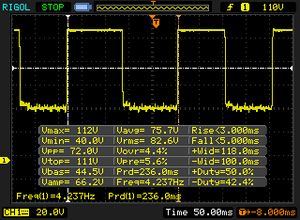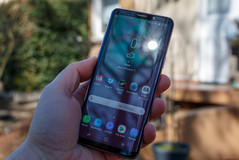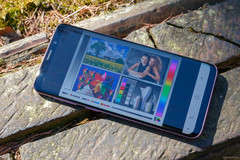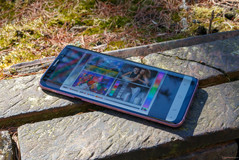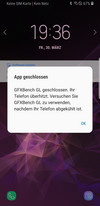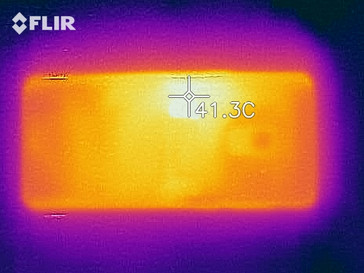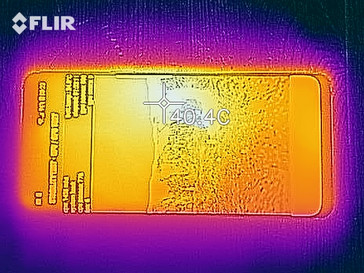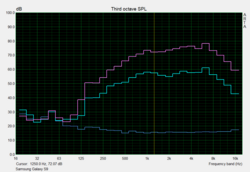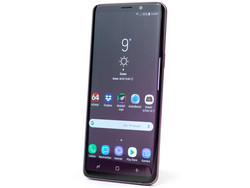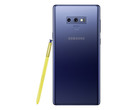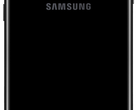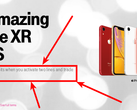Samsung Galaxy S9 Smartphone Review
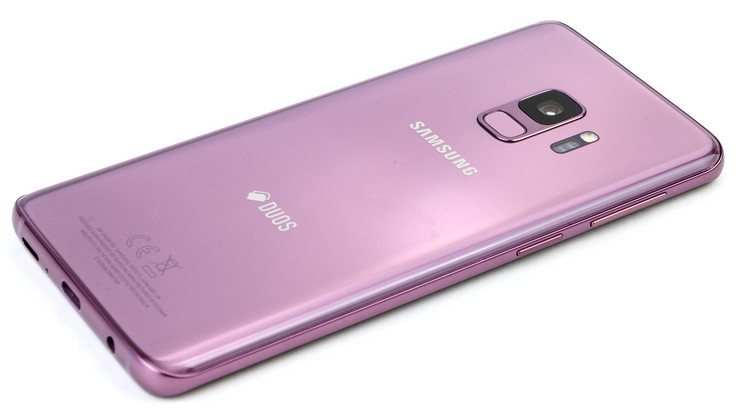
The Samsung Galaxy S9 (SM-G960F) is certainly the poster child of the South Korean's manufacturer. Compared to the previous model, however, it is more about refinement than real innovations. A new SoC, faster RAM, and the camera have been redesigned as well. The latter now automatically switches between an f/1.5 and f/2.4 aperture, but unlike the Plus model, there is no dual-camera. This means that the portrait function should not work that well and there is no 2x optical zoom.
The other hardware components remind us a lot of the predecessor. 64 GB UFS 2.1 storage, microSD support, water- and dustproof case, and an Infinity-Edge display. Bluetooth 5.0, fast LTE Cat. 18 and comprehensive sensor equipment complete the package. There is once again a price increase this year, and the smartphone now retails for 849 Euros (~$1045; an increase of 50 Euros/~$60). Some markets only get the 64 GB version, while other regions can also choose the 128 or the 256 GB storage.
The Galaxy S9 aims to defend its throne and has to compete against all the high-end competitors. This includes the Apple iPhone X, the Huawei Mate 10 Pro, the LG V30, the Sony Xperia XZ2, the HTC U11, the Google Pixel 2, the OnePlus 5T, the Honor View 10 as well as the Nokia 8.
Case – Samsung smartphone not waterproof for longer periods
As with the case of the Galaxy S8, both the front and the rear of the Samsung Galaxy S9 are made of Corning Gorilla Glass 5. The manufacturer reworked the colors a bit: Besides the Midnight Black and Coral Blue, you now also get Lilac Purple, which looks really good. The test model is slightly larger than before (not unlike the Galaxy S9+) and is now 8.5 mm (~0.33 in) thick. However, it almost appears small and delicate in the hand compared to the larger sibling, and it is also noticeably lighter.
The build quality is very good. All the gaps are small and even, and twisting attempts are no challenge for the smartphone, even though we can hear some creaking inside the case. There has also been an in-depth drop test (we reported) by an independent institute and it passed except for some minor scratches, which was not the case with the previous model. It is good that Samsung has improved this aspect effectively.
The protection classification is misleading. Samsung advertises IP68, which suggests that the smartphone is both dust and waterproof. However, Samsung limits this in the footnotes and reduces the protection against unlimited submersion in water to a time-limited (30 minutes) submersion up to a depth of 1.5 meters (~5 ft) – which means IP67.
Depending on the model that you get, the card tray at the top edge of the smartphone can either carry one Nano-SIM and a microSD card or two Nano-SIM cards (Duos). The tray itself is unfortunately only made of thin plastic. The battery is integrated and cannot be replaced by the user.
Connectivity
The Samsung Galaxy S9 offers a very comprehensive sensor equipment, which does not leave anything to be desired. This also includes a heart rate monitor. You also get all the wireless connectivity that you can hope for. Besides Bluetooth 5.0, the smartphone also supports NFC, MST, and Ant+. The former once again supports dual-audio and can drive two speakers simultaneously. aptX for high-resolution audio is also included.
According to the specification sheet the microSD card slot supports memory cards with a capacity of up to 400 GB, which is currently the maximum as of this writing. The SDXC standard includes up to 2 TB, so higher-capacity cards should not be a problem in the future. There is a big performance difference between the internal and the optional storage, so it is not possible to format the microSD card as internal storage or transfer apps, but the latter can be activated in the developer settings.
Samsung has now implemented a modern USB Type-C connector based on the USB standard 3.1 (Gen. 1). It is also OTG capable, so you can connect peripherals or storage drives via an adapter. It is also possible to charge other devices with the Galaxy S9, and the port also supports video output via HDMI and DisplayPort 1.2.
Users only have to do without an FM radio and an infrared transmitter.
Software – Android Oreo without major improvements
Samsung ships both the Galaxy S9 and its larger sibling with the operating system Google Android 8.0 Oreo with its own Samsung-UI 9.0. There are hardly any visual differences compared to Android 7, which is running on the Galaxy Note 8, for example. The security patch level at the time of the review is March 1st 2018 and therefore up to date.
Samsung's own assistant Bixby is once again included. Subjectively, however, there have hardly been any developments since its introduction and is still not available in all languages, but limited to Korean, Chinese, and English.
The new AR emojis are more of a nice gimmick than a really matured feature. Live movements in particular are not perfectly executed and the mouth of the digital head is often shaky and jittery. We like the available stickers in social media apps much better, even though the recognition value is not very high.
Familiar features such as the Edge stripe or the Game Launcher are still included, the same as Samsung's own app store. Some apps from Microsoft and Facebook are preinstalled and cannot be removed completely, but only deactivated. Many Google apps, on the other hand can be deleted. Unfortunately, Samsung does not offer the feature to set up multiple user accounts on the smartphone.
Communication and GPS
The Samsung Galaxy S8 covers a wide range of mobile frequencies. However, the Korean manufacturer does not use a global version, but several regional variants. The European model carries the designation SM-G965F and supports 35 bands and the LTE module (Cat. 18) can reach download speeds of up to 1.2 Gbps, so it is currently one of the fastest smartphones. We did not have any problems with the signal quality in a metropolitan area.
The Wi-Fi module has not changed compared to the previous Galaxy S8. It still supports the IEEE 820.11 standards a/b/g/n/ac with VHT80 MU-MIMO as well as 1024 QAM (10-bit quadrature amplitude modification). The Galaxy S9 should perform similar to its predecessor, but Samsung has done some tuning and improved the reception performance in particular. The transmission performance on the other hand is slightly worse, but the overall performance in combination with our reference router Linksys EA8500 is still very good.
The Galaxy S9 is unfortunately a bit slow when it comes to the automatic switching to a stronger access point, which is important when you have multiple Wi-Fi access points at home or your office. We often had to deactivate and reactivate the Wi-Fi connection manually to connect with the stronger access point. However, this is a common problem amongst smartphones. Only the Huawei Mate 10 Pro is a bit better in the comparison, which changes access points much faster thanks to its Wi-Fi+ technology.
The Galaxy S9 uses the satellite networks GPS, GLONASS, BeiDou, QZSS and Galileo for the location, so there is a lot to choose from and a barometer is included as well. The satellite fix is basically instantaneous outdoors, but it takes a bit longer inside of buildings. Unlike the Galaxy S9+, the test model did not establish a satellite connection at the basement window.
We took the Galaxy S9 on a short bicycle tour and compared it with the bicycle navigation device Garmin Edge 500 to see how the smartphone performs. The accuracy is not as good as on the larger sibling. The Galaxy S9 performs well, but the deviation is just average within the comparison group for the complete track.
Telephone Functions and Voice Quality
The phone app of the Samsung Galaxy S9 has changed slightly compared to the previous model and is now lighter. The tab "Location" has been removed completely and you can only change between the call list, your contacts, and the number pad.
The voice quality of the smartphone is good and does not give any cause for criticism if the provider supports VoLTE. There is noticeably more noise over 3G networks, but the quality is still good in general. The ambient noise suppression on the other hand could have been better, because there are occasional scattered sounds. Using the Galaxy S9 in hands-free mode via speaker also works well. The voice will resound a bit, but it is no problem to put the smartphone on a tablet and use your hands for other stuff. The smartphone also supports Wi-Fi calls.
Our test model of the Galaxy S9 is the Duos version, so the microSD slot can also be used for a second SIM card. However, the Galaxy smartphone does not support Dual-VoLTE.
Cameras – Slimmed-down camera with Samsung sensor
The front camera (Samsung S5K3H1) of the Samsung Galaxy S9 is identical to that of the previous model. It is an 8 MP sensor with an f/1.7 aperture and even features an auto-focus. The camera also offers numerous settings and filters. It is also possible to create front camera pictures with a blurry background via Selfie-Focus function. This works quite well, but competitors such as the Pixel 2 or the iPhone X perform better. The pictures are good in daylight and convince with sharp images and a comparatively high dynamic range. Low-light pictures are also still okay, but there is visible picture noise.
The front camera also supports a number of formats including 18.5:1 (2224x1080 pixels) and QHD (2560x1440 pixels). The frame rate is limited to 30 FPS.
We also had another look at the front camera of the Galaxy S9 under controlled lighting conditions. You can see that the camera quickly hits its limitations in terms of sharpness and presentation of details, because fine details are slightly blurry. However, this can actually be an advantage for selfies.
Unlike the Galaxy S9+ with its dual-camera setup, the smaller S9 only gets a single-cam solution not unlike its predecessor. This main camera (Samsung SLSI_SAK2L3_FIMC_IS) still offers a new feature. Samsung has equipped it with a modular lens, which can switch between an f/1.5 and f/2.4 aperture depending on the lighting conditions. Daylight pictures in particular can benefit from this feature, because bright areas are less prone to overexposure and the results are extremely sharp. The Galaxy S9 convinces with high dynamic range and great presentation of details. However, the S9 does not win the comparison with the Pixel 2. Google's smartphone is slightly better in scene 1 and 3, and the Galaxy S9 has only a small lead in scene 2. The performance of the S9 is also really good in low-light scenarios, but is once again beaten by the Pixel 2. The pictures do not look as artificially bright as it was the case on the Galaxy S8, and the edges are now clearer. Colors also look pretty good.
You can even get slightly better results with the Pro mode. It offers manual settings for the white balance, light sensitivity (ISO 50 - 800), shutter speed (1/24000 - 10s), the focus as well as the aperture. The Pro mode also supports RAW pictures. The Live-View feature has improved slightly, but is still not working reliably with long shutter speeds. An optical image stabilizer (OIS) is also included.
The Galaxy S9 can finally record Ultra HD video at up to 60 frames per second. Colors look rather saturated, but the video quality is really good. Recordings are unfortunately limited to five minutes in this setting, and to ten minutes in UHD at 30 FPS and Full HD at 60 FPS.
The Super-Slow-Motion mode with 960 frames per second is another new feature, which already premiered in last year's Sony Xperia XZ Premium. Samsung defines a picture square, which will automatically activate the mode as soon as the camera notices a movement in this square. This is a great idea and works well in practice, especially since you can use it up to four times in one video. However, the quality is only acceptable in really good lighting conditions and drops significantly in low-light situations. The results look very unsteady, noisy, and dark. The low resolution (720p) also limits these videos to social media apps. Sony is one step ahead and will feature Full HD for the Xperia XZ2, but without the handy automatic.
The Galaxy S9 also leaves a very good impression under controlled lighting conditions. The detail presentation of the camera is particularly impressive with the f/2.4 aperture, but the f/1.5 also works well. The sharpness loss towards the edges is okay, but visible.
We also check the color accuracy of the camera with the ColorChecker Passport. The actual reference color is displayed in the lower half of each patch. The saturation is, as expected, a bit higher, but not too obtrusive.
Accessories and Warranty
The box of the Samsung Galaxy S9 includes a black modular power adapter (9.0V, 1.67A; 5.0V, 2.0A), a corresponding USB cable (Type-A to Type-C), two OTG adapters (Type-C to Type-A, and Type-C to micro-USB), a SIM tool, an AKG in-ear headset with tips in different sizes as well as several pamphlets about security, warranty, and a quick-start guide. Some countries also get a silicon case.
There are numerous optional accessories in Samsung's own shop, including several covers, an inductive charging station (75 Euros/~$92) and some other products.
Samsung Offers a two-year warranty for its product, while the included accessories are covered for six and the battery for twelve months.
You can purchase Samsung's Mobile Care Package for an additional price of 119 Euros (~$146). It covers damages such as broken displays, liquid damages, and defective batteries for 24 months. You will have to pay an additional service fee of 10% of the original purchase price for each service.
Please see our Guarantees, Return Policies and Warranties FAQ for country-specific information.
Input Devices & Handling
The handling of the new Samsung Galaxy S9 has not changed that much. The capacitive touchscreen is protected by Corning Gorilla Glass 5 and recognizes up to ten inputs simultaneously. They are quickly executed without any delays. Samsung still uses its own keyboard layout, which looks very simple, but it sometimes creates more work, especially with the activated spelling correction. However, you can easily replace the layout with one from the Play Store.
The physical buttons of the smartphone are well-built and implemented. Besides the power button, you get the volume rocker and the button for Bixby. The latter also starts an overview with upcoming appointments, weather information, Samsung Health, news, and many more, even when the smartphone is still locked. You can also deactivate the button once Bixby has been set-up, but it is not possible to assign it with other functions.
Fortunately, the fingerprint scanner has been relocated and is now sitting under the camera of the Galaxy S9, so it is easier to access. The detection rate of the sensor is good, but the unlock speed could be a bit faster. However, the alternatives such as facial recognition and iris scanner are even slower and the former is not particularly secure either. Another disadvantage of the iris scanner is that we often had to lift the smartphone to the height of our face for it to unlock the device. This process is much better and quicker with Apple's Face-ID, for example.
Android's control elements are once again located on the display. You can activate the one-hand mode by three taps on the on-screen Home button and it will reduce the whole display area, so it is easier to reach.
Display - Slightly modified Galaxy S8 panel
The display of the Samsung Galaxy S9 measures 5.8 inches (14.73 cm, 85.38 cm²). It is an 18.5:9 aspect ratio with a resolution of up to 2960x1440 pixels, but the default setting was 2220x1080. This saves power, but you should change the setting if you want to enjoy the full quality of the excellent panel.
The luminance of the Infinity Edge display is a bit worse compared to its predecessor and we measured an average of 527 nits on a completely white background with the activated ambient light sensor. We measured up to 730 nits in the center of the screen with an even distribution of dark and bright surfaces (APL50), which is lower than on the Galaxy S8. Samsung even spoke about up to 1000 nits during the announcement. The maximum luminance with the manual control is 327 nits.
The brightness distribution is very even and the panel can show pure black thanks to the OLED technology, so the contrast ratio tends towards infinite in theory. You also get a blue-light filter, which creates comfortable pictures in dark environments in combination with the low minimum brightness. The Galaxy S9 unfortunately still uses pulse-width modulation (PWM) to regulate the luminance, which can be tiring for the eyes and even result in headaches for sensitive users. The low frequency is not favorable, but the amplitude curve is very flat, which can compensate for the frequency to a certain extent. The two features Always-On display and HDR support from the previous model are once again included.
| |||||||||||||||||||||||||
Brightness Distribution: 96 %
Center on Battery: 529 cd/m²
Contrast: ∞:1 (Black: 0 cd/m²)
ΔE Color 1.4 | 0.5-29.43 Ø5
ΔE Greyscale 1.6 | 0.57-98 Ø5.3
Gamma: 2.16
| Samsung Galaxy S9 Super AMOLED, 2960x1440, 5.80 | Samsung Galaxy S8 Super AMOLED, 2960x1440, 5.80 | Google Pixel 2 AMOLED, 1920x1080, 5.00 | Apple iPhone X Super AMOLED, 2436x1125, 5.80 | Huawei Mate 10 Pro OLED, 2160x1080, 6.00 | LG V30 OLED, 2880x1440, 6.00 | Xiaomi Mi Mix 2 IPS, 2160x1080, 6.00 | |
|---|---|---|---|---|---|---|---|
| Screen | -35% | -9% | 11% | -4% | -98% | -64% | |
| Brightness middle | 529 | 566 7% | 396 -25% | 600 13% | 629 19% | 432 -18% | 472 -11% |
| Brightness | 527 | 564 7% | 404 -23% | 606 15% | 636 21% | 428 -19% | 430 -18% |
| Brightness Distribution | 96 | 94 -2% | 91 -5% | 94 -2% | 94 -2% | 87 -9% | 87 -9% |
| Black Level * | 0.27 | ||||||
| Colorchecker dE 2000 * | 1.4 | 2.7 -93% | 1.7 -21% | 1.2 14% | 1.7 -21% | 4.18 -199% | 3.5 -150% |
| Colorchecker dE 2000 max. * | 4 | 5.4 -35% | 4 -0% | 3 25% | 3.6 10% | 8.53 -113% | 5.9 -48% |
| Greyscale dE 2000 * | 1.6 | 3.1 -94% | 1.3 19% | 1.6 -0% | 2.4 -50% | 5.3 -231% | 4 -150% |
| Gamma | 2.16 102% | 2.15 102% | 2.3 96% | 2.23 99% | 2.15 102% | 2.33 94% | 2.29 96% |
| CCT | 6358 102% | 6335 103% | 6483 100% | 6707 97% | 6337 103% | 7487 87% | 7048 92% |
| Color Space (Percent of AdobeRGB 1998) | 81.57 | ||||||
| Color Space (Percent of sRGB) | 99.87 | ||||||
| Contrast | 1748 |
* ... smaller is better
Screen Flickering / PWM (Pulse-Width Modulation)
| Screen flickering / PWM detected | 240.4 Hz | ||
The display backlight flickers at 240.4 Hz (worst case, e.g., utilizing PWM) . The frequency of 240.4 Hz is relatively low, so sensitive users will likely notice flickering and experience eyestrain at the stated brightness setting and below. In comparison: 53 % of all tested devices do not use PWM to dim the display. If PWM was detected, an average of 17900 (minimum: 5 - maximum: 3846000) Hz was measured. | |||
We had a closer look at the color accuracy of the Super AMOLED panel in the Samsung Galaxy S9 with our spectrophotometer and the analysis software CalMAN. Samsung uses an adaptive display setting by default, which automatically changes the profile based on the apps you are running. However, this profile results in a pretty cool picture. You can optimize the settings manually if you prefer a more natural presentation. The screenshot shows the settings for such a natural presentation, which uses the wide DCI-P3 color space.
The other three remaining profiles mainly differ in terms of target color space. All profiles try to manage an accurate white point nowadays. The Cinema mode also uses the DCI-P3 color space, while the Simple mode targets sRGB. We determined the most accurate colors in the Photo mode, which uses Adobe RGB to show more shades of green.
The DeltaE deviations are low in all modes, only the adaptive mode suffers from a color cast (blue) visible to the human eye. There are some small outliers for the colors, but that is not a big problem and it does not affect the results. The biggest deviation in the Photo mode is green (dE 4). Apple's iPhone X is the only competitor in this group with more accurate colors.
Display Response Times
| ↔ Response Time Black to White | ||
|---|---|---|
| 6 ms ... rise ↗ and fall ↘ combined | ↗ 3 ms rise | |
| ↘ 3 ms fall | ||
| The screen shows very fast response rates in our tests and should be very well suited for fast-paced gaming. In comparison, all tested devices range from 0.1 (minimum) to 240 (maximum) ms. » 13 % of all devices are better. This means that the measured response time is better than the average of all tested devices (21.5 ms). | ||
| ↔ Response Time 50% Grey to 80% Grey | ||
| 8 ms ... rise ↗ and fall ↘ combined | ↗ 3 ms rise | |
| ↘ 5 ms fall | ||
| The screen shows fast response rates in our tests and should be suited for gaming. In comparison, all tested devices range from 0.2 (minimum) to 636 (maximum) ms. » 15 % of all devices are better. This means that the measured response time is better than the average of all tested devices (33.7 ms). | ||
The viewing angle stability of the Galaxy smartphone is on par with the previous model. The typical OLED color cast from very flat angles is limited to extreme shifts and is not as pronounced as on the Galaxy S7, for example. The brightness also takes a small hit.
Performance – Smartphone with powerful Exynos-SoC
Samsung has equipped the Galaxy S9 with its own high-end SoC Exynos 9810. The CPU consists of two clusters: The performance cluster uses four Exynos M3 cores running at up to 2.9 GHz, while the efficiency cluster is powered by four ARM Cortex-A55 cores clocked at up to 1.9 GHz. The SoC is supported by 4 GB LPDDR4x RAM, and the larger sibling S9+ even ships with 6 GB. The integrated graphics adapter is called ARM Mali-G72 MP18.
The CPU shows a significant performance advantage in the benchmarks and is between 31 and 85% faster in Geekbench 4.2. However, the performance gains are much smaller in the older Geekbench versions and they are sometimes even non-existent. The Geekbench RenderScript test even determines a lower performance compared to the Exynos 8895. Subjectively, the system performance is good, but we regularly noticed small stutters.
The new GPU is also between 12 and 92% faster in GFXBench, but cannot beat the iPhone in the Offscreen tests. Some Android competitors (not all of them QHD) also manage better Onscreen test results we performed with the maximum resolution. The situation is even a bit worse for the Galaxy S9 in 3DMark; some rivals with the nominally weaker Snapdragon 835 in more challenging benchmarks achieved better results.
| AnTuTu v6 - Total Score (sort by value) | |
| Samsung Galaxy S9 | |
| Samsung Galaxy S8 | |
| LG V30 | |
| OnePlus 5T | |
| HTC U11 | |
| Google Pixel 2 | |
| Apple iPhone X | |
| Huawei Mate 10 Pro | |
| Average Samsung Exynos 9810 (214090 - 222290, n=3) | |
| AnTuTu v7 - Total Score (sort by value) | |
| Samsung Galaxy S9 | |
| OnePlus 5T | |
| Xiaomi Mi Mix 2 | |
| Google Pixel 2 | |
| Apple iPhone X | |
| Huawei Mate 10 Pro | |
| Average Samsung Exynos 9810 (236552 - 250577, n=3) | |
| Lightmark - 1920x1080 1080p (sort by value) | |
| Samsung Galaxy S9 | |
| Samsung Galaxy S8 | |
| HTC U11 | |
| Google Pixel 2 | |
| Huawei Mate 10 Pro | |
| Average Samsung Exynos 9810 (34 - 35.8, n=2) | |
| Basemark X 1.1 | |
| Medium Quality (sort by value) | |
| Samsung Galaxy S8 | |
| HTC U11 | |
| Huawei Mate 10 Pro | |
| High Quality (sort by value) | |
| Samsung Galaxy S8 | |
| HTC U11 | |
| Huawei Mate 10 Pro | |
| Basemark ES 3.1 / Metal - offscreen Overall Score (sort by value) | |
| Samsung Galaxy S9 | |
| Samsung Galaxy S8 | |
| HTC U11 | |
| Google Pixel 2 | |
| Apple iPhone X | |
| Huawei Mate 10 Pro | |
| Average Samsung Exynos 9810 (1436 - 1481, n=3) | |
| Average of class Smartphone (177 - 6114, n=58, last 2 years) | |
| Epic Citadel - Ultra High Quality (sort by value) | |
| Samsung Galaxy S8 | |
| HTC U11 | |
| Huawei Mate 10 Pro | |
Web browsing is an enjoyable and fast experience on the Galaxy S9 and its preloaded Samsung browser (version 7.0). The benchmarks, however, only determine average scores, and the Samsung smartphone is worse than its predecessor in WebXPRT 2015.
| JetStream 1.1 - Total Score | |
| Apple iPhone X (IOS 11.1.1) | |
| Average of class Smartphone (last 2 years) | |
| HTC U11 (Chrome 58) | |
| Samsung Galaxy S9 (Samsung Browser 7.0) | |
| OnePlus 5T (Chrome 63) | |
| Samsung Galaxy S8 (Samsung Browser 5.2) | |
| Average Samsung Exynos 9810 (62.9 - 69.6, n=4) | |
| Google Pixel 2 (Chrome 62) | |
| Huawei Mate 10 Pro (Chrome 61) | |
| LG V30 (Chrome 62) | |
| Octane V2 - Total Score | |
| Apple iPhone X (IOS 11.1.2) | |
| Average of class Smartphone (4633 - 89112, n=213, last 2 years) | |
| Samsung Galaxy S9 (Samsung Browser 7.0) | |
| Average Samsung Exynos 9810 (12933 - 15233, n=4) | |
| Samsung Galaxy S8 (Samsung Browser 5.2) | |
| OnePlus 5T (Chrome 63) | |
| HTC U11 (Chrome 58) | |
| Google Pixel 2 (Chrome 62) | |
| LG V30 (Chrome 62) | |
| Huawei Mate 10 Pro (Chrome 61) | |
| Xiaomi Mi Mix 2 (Chrome 53) | |
| Mozilla Kraken 1.1 - Total | |
| LG V30 (Chrome 62) | |
| Huawei Mate 10 Pro (Chrome 61) | |
| Google Pixel 2 (Chrome 62) | |
| OnePlus 5T (Chrome 63) | |
| HTC U11 (Chrome 58) | |
| Xiaomi Mi Mix 2 (Chrome 53) | |
| Average Samsung Exynos 9810 (2060 - 3189, n=4) | |
| Samsung Galaxy S9 (Samsung Browser 7.0) | |
| Samsung Galaxy S8 (Samsung Browser 5.2) | |
| Average of class Smartphone (388 - 9999, n=173, last 2 years) | |
| Apple iPhone X (IOS 11.1.2) | |
| WebXPRT 2015 - Overall | |
| Apple iPhone X (Safari Mobile 11.0) | |
| Samsung Galaxy S8 (Samsung Browser 5.2) | |
| Google Pixel 2 (Chrome 62) | |
| OnePlus 5T (Chrome 63) | |
| Average Samsung Exynos 9810 (163 - 202, n=3) | |
| Samsung Galaxy S9 (Samsung Browser 7.0) | |
| HTC U11 (Chrome 58) | |
| Huawei Mate 10 Pro (Chrome 61) | |
| LG V30 (Chrome 62) | |
| Xiaomi Mi Mix 2 (Chrome 53) | |
* ... smaller is better
The Samsung Galaxy S9 is shipped with 64 GB UFS 2.1 storage, and you can still use about 50 GB after the initial setup. The maximum transfer rates of the storage are really good, but the competition can be much faster when it comes to the read and write performance of smaller data blocks, especially the HTC U11 and the Mate 10 Pro.
We tested the performance of the microSD slot with our reference card Toshiba Exceria Pro M501. The transfer rates are decent, but not even close to the full performance potential of the card.
| Samsung Galaxy S9 | Samsung Galaxy S8 | LG V30 | HTC U11 | Xiaomi Mi Mix 2 | Huawei Mate 10 Pro | Average 64 GB UFS 2.1 Flash | Average of class Smartphone | |
|---|---|---|---|---|---|---|---|---|
| AndroBench 3-5 | -14% | -29% | 27% | -8% | 151% | 38% | 423% | |
| Sequential Read 256KB | 815 | 793 -3% | 669 -18% | 717 -12% | 704 -14% | 732 -10% | 696 ? -15% | 1508 ? 85% |
| Sequential Write 256KB | 206.9 | 193.2 -7% | 193.2 -7% | 206.4 0% | 208.6 1% | 208.7 1% | 224 ? 8% | 1118 ? 440% |
| Random Read 4KB | 131 | 127.2 -3% | 78.2 -40% | 91.4 -30% | 148.5 13% | 132.3 1% | 137.2 ? 5% | 247 ? 89% |
| Random Write 4KB | 23.07 | 15.25 -34% | 10.21 -56% | 80 247% | 15.75 -32% | 164.4 613% | 84.7 ? 267% | 272 ? 1079% |
| Sequential Read 256KB SDCard | 79.2 ? | 63.9 ? -19% | 62.8 -21% | 68.8 ? -13% | 68.6 ? -13% | |||
| Sequential Write 256KB SDCard | 67.2 ? | 53.5 ? -20% | 47.2 -30% | 46.25 ? -31% | 52.2 ? -22% |
Games
The Samsung Galaxy S9 is equipped with one of the fastest SoCs, a high-resolution display as well as dual-speakers. This should be a great combination for gaming, but the Koreans cannot always use the full potential of the smartphones. Instead, there are frame rate limits, which is noticeable in the games “Asphalt 8” and “Dead trigger 2”. All the other games we tested with GameBench delivered great results and high (and steady) frame rates.
The sensors and the touchscreen also work well and execute inputs quickly and reliably.
| Asphalt 8: Airborne | |||
| Settings | Value | ||
| high | 30 fps | ||
| Dead Trigger 2 | |||
| Settings | Value | ||
| high | 30 fps | ||
| Battle Bay | |||
| Settings | Value | ||
| full resolution | 60 fps | ||
| World of Tanks Blitz | |||
| Settings | Value | ||
| high, 0xAA, 0xAF | 60 fps | ||
| Arena of Valor | |||
| Settings | Value | ||
| high HD | 59 fps | ||
| Shadow Fight 3 | |||
| Settings | Value | ||
| high | 59 fps | ||
Emissions – Galaxy S9 with short battery runtimes
Temperature
The Galaxy S9 hardly warms up at all while idling. The surface temperatures only warm up noticeably under sustained workloads and the device gets lukewarm.
We test the temperature development of the Exynos SoC with the GFXBench Battery Tests, which repeat the corresponding benchmark thirty times and log both the frame rates as well as the battery capacity. The Galaxy smartphone shows a similar behavior to the S9+ in the T-Rex test and can maintain its performance for quite a while before the performance drops significantly. The situation is different in the more demanding Manhattan test, where the performance of the S9 is much better. However, the smartphone can overheat in these situations, which is why we deduct points in this section.
(+) The maximum temperature on the upper side is 35.4 °C / 96 F, compared to the average of 35 °C / 95 F, ranging from 21.9 to 56 °C for the class Smartphone.
(+) The bottom heats up to a maximum of 36.2 °C / 97 F, compared to the average of 33.8 °C / 93 F
(+) In idle usage, the average temperature for the upper side is 22.9 °C / 73 F, compared to the device average of 32.7 °C / 91 F.
Speakers
As with the Galaxy S9+, the Samsung's premium Galaxy S9 is equipped with two speakers for the first time. They are not just better from a subjective point of view, but can also convince in the measurements. Mids and highs are linear, but they are unfortunately a bit too far apart from each other, so the sound is not really balanced. The performance is still decent within the comparison group.
The Galaxy S9 fortunately still offers a stereo jack, which enables noise-free playback. The provided headphones are identical to those of the previous model and sound decent as long as the volume is not too high. You can make use of aptX for Bluetooth when you prefer wireless headphones.
Samsung Galaxy S9 audio analysis
(+) | speakers can play relatively loud (86 dB)
Bass 100 - 315 Hz
(-) | nearly no bass - on average 23.1% lower than median
(±) | linearity of bass is average (11.5% delta to prev. frequency)
Mids 400 - 2000 Hz
(+) | balanced mids - only 3.1% away from median
(+) | mids are linear (3.8% delta to prev. frequency)
Highs 2 - 16 kHz
(+) | balanced highs - only 4.8% away from median
(+) | highs are linear (4.3% delta to prev. frequency)
Overall 100 - 16.000 Hz
(±) | linearity of overall sound is average (17.2% difference to median)
Compared to same class
» 7% of all tested devices in this class were better, 6% similar, 87% worse
» The best had a delta of 12%, average was 38%, worst was 134%
Compared to all devices tested
» 26% of all tested devices were better, 8% similar, 66% worse
» The best had a delta of 4%, average was 25%, worst was 134%
Google Pixel 2 audio analysis
(+) | speakers can play relatively loud (89.4 dB)
Bass 100 - 315 Hz
(-) | nearly no bass - on average 27% lower than median
(±) | linearity of bass is average (8% delta to prev. frequency)
Mids 400 - 2000 Hz
(±) | reduced mids - on average 5.6% lower than median
(+) | mids are linear (5.3% delta to prev. frequency)
Highs 2 - 16 kHz
(±) | higher highs - on average 5.3% higher than median
(+) | highs are linear (4.7% delta to prev. frequency)
Overall 100 - 16.000 Hz
(±) | linearity of overall sound is average (20% difference to median)
Compared to same class
» 25% of all tested devices in this class were better, 9% similar, 66% worse
» The best had a delta of 12%, average was 38%, worst was 134%
Compared to all devices tested
» 46% of all tested devices were better, 8% similar, 46% worse
» The best had a delta of 4%, average was 25%, worst was 134%
HTC U11 audio analysis
(±) | speaker loudness is average but good (81.4 dB)
Bass 100 - 315 Hz
(-) | nearly no bass - on average 24.5% lower than median
(±) | linearity of bass is average (13.3% delta to prev. frequency)
Mids 400 - 2000 Hz
(+) | balanced mids - only 4.1% away from median
(±) | linearity of mids is average (7.4% delta to prev. frequency)
Highs 2 - 16 kHz
(±) | higher highs - on average 5.1% higher than median
(+) | highs are linear (6.2% delta to prev. frequency)
Overall 100 - 16.000 Hz
(±) | linearity of overall sound is average (22.1% difference to median)
Compared to same class
» 40% of all tested devices in this class were better, 7% similar, 53% worse
» The best had a delta of 12%, average was 38%, worst was 134%
Compared to all devices tested
» 59% of all tested devices were better, 7% similar, 34% worse
» The best had a delta of 4%, average was 25%, worst was 134%
Battery Runtime
Power Consumption
Our consumption measurements of the Galaxy S9 impressively show Samsung's dominance in this section. The Galaxy smartphone manages really good values, but they were determined with the maximum brightness setting without the ambient light sensor. The device can consume much more power when it is active and the consumption is increased by 0.61W. The low values under load can only be explained by the good power management of the SoC, because we measured up to 10.32W when we started the Galaxy S9.
We were not able to determine a self-consumption of the modular power adapter (9.0V, 1.67A; 5.0V, 2.0A). The Always-On display does not consume a whole lot of power, but still increases the standby consumption by 0.23W.
As with the S9+, a full recharge takes quite a while . Little more than four hours is way too long for a device with Quick-Charge support. Samsung will probably improve this via an update. Once again, wireless charging is supported.
| Off / Standby | |
| Idle | |
| Load |
|
| Samsung Galaxy S9 3000 mAh | Samsung Galaxy S8 3000 mAh | HTC U11 3000 mAh | Google Pixel 2 2700 mAh | Apple iPhone X 2716 mAh | Xiaomi Mi Mix 2 3771 mAh | Average Samsung Exynos 9810 | Average of class Smartphone | |
|---|---|---|---|---|---|---|---|---|
| Power Consumption | -14% | -62% | -40% | -85% | -64% | -49% | -54% | |
| Idle Minimum * | 0.65 | 0.78 -20% | 0.73 -12% | 0.99 -52% | 1.03 -58% | 0.69 -6% | 0.783 ? -20% | 0.897 ? -38% |
| Idle Average * | 0.81 | 1.1 -36% | 1.96 -142% | 1.35 -67% | 2.4 -196% | 2.03 -151% | 1.315 ? -62% | 1.452 ? -79% |
| Idle Maximum * | 0.92 | 1.16 -26% | 1.98 -115% | 1.37 -49% | 2.6 -183% | 2.1 -128% | 1.903 ? -107% | 1.629 ? -77% |
| Load Average * | 4.76 | 4.15 13% | 4.82 -1% | 3.25 32% | 2.96 38% | 3.18 33% | 5.76 ? -21% | 5.55 ? -17% |
| Load Maximum * | 5.16 | 5.12 1% | 7.15 -39% | 8.56 -66% | 6.6 -28% | 8.73 -69% | 7.06 ? -37% | 8.31 ? -61% |
* ... smaller is better
Battery Runtime – Galaxy S9 surprisingly poor
The power consumption of the Samsung Galaxy was surprisingly good, but that does not result in corresponding battery runtimes. The 3000 mAh battery discharges much quicker compared to the previous model and is beaten in all scenarios, and the Samsung smartphone is actually the worst device in this comparison.
The stamina in the WLAN test in particular, with an adjusted luminance of 150 nits is not convincing. While the Galaxy S8 still lasted almost twelve hours in this scenario, we only determine less than eight hours for the S9. A mediocre result that makes it hard to last a full day with one battery charge.
The other energy-saving modes are also available once again, but Samsung should definitely provide an update for the runtime.
| Samsung Galaxy S9 3000 mAh | Samsung Galaxy S8 3000 mAh | LG V30 3300 mAh | HTC U11 3000 mAh | Google Pixel 2 2700 mAh | Apple iPhone X 2716 mAh | Xiaomi Mi Mix 2 3771 mAh | Huawei Mate 10 Pro 4000 mAh | |
|---|---|---|---|---|---|---|---|---|
| Battery Runtime | 45% | 56% | 9% | 9% | 11% | 27% | 79% | |
| Reader / Idle | 1182 | 1667 41% | 1914 62% | 1250 6% | 1457 23% | 1292 9% | 1744 48% | |
| H.264 | 609 | 771 27% | 822 35% | 498 -18% | 564 -7% | 634 4% | 929 53% | |
| WiFi v1.3 | 474 | 719 52% | 774 63% | 560 18% | 575 21% | 564 19% | 600 27% | 818 73% |
| Load | 164 | 264 61% | 267 63% | 212 29% | 161 -2% | 180 10% | 398 143% |
Pros
Cons
Verdict
We prefer the Samsung Galaxy S9 over its larger sibling S9+. It is not as bulky and the dual-camera is not worth the additional price. The Korean manufacturer once again delivers a really great smartphone, but it is more of a facelift of last year's Galaxy S8 and there are still some bugs, and some of them are not insignificant. The runtime in particular is too short, especially compared to the old S8. This is most annoying for users who pre-ordered the Samsung smartphone and paid the full price, because they now have to hope the manufacturer will fix this via an update as quickly as possible.
Samsung has to rollout updates to fix the short battery runtime, because the Galaxy S9 has the potential to be a great smartphone.
The Korean manufacturer still delivers a great product. A fast processor, great display, better location for the fingerprint scanner, expandable storage, good stereo speakers, protection against dust and water, and an optional Dual-SIM model are some of the advantages. However, some features that were blown up in the announcement, such as AR Emoji and the super-slow-motion function of the camera are more of a gimmick than really sophisticated features with an additional value.
You can stay relaxed if you already own a Galaxy S8, because we do not think there is a compelling reason for an upgrade.
Samsung Galaxy S9
-
08/31/2022 v7
Daniel Schmidt


 Deutsch
Deutsch English
English Español
Español Français
Français Italiano
Italiano Nederlands
Nederlands Polski
Polski Português
Português Русский
Русский Türkçe
Türkçe Svenska
Svenska Chinese
Chinese Magyar
Magyar